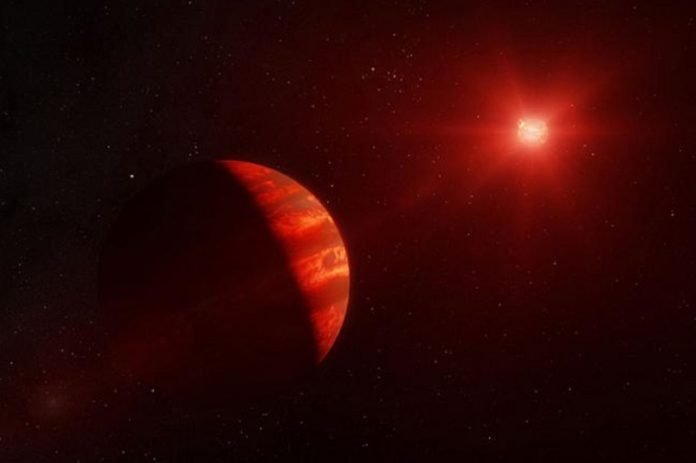
The dearth of Jupiters suggests that potentially habitable, Earth-like planets might not readily emerge around red dwarf stars.
Astronomers have made an intriguing discovery about red dwarf stars, which are the smallest and most common type of stars in the universe.
These stars rarely have giant planets similar to Jupiter, and this has important implications for the development of Earth-like planets and the search for alien life.
In this article, we will explore why the absence of Jupiter-like planets around red dwarfs could impact the potential habitability of their rocky worlds.
Jupiter, the largest planet in our solar system, has played a crucial role in shaping the conditions that made Earth habitable.
Scientists believe that Jupiter’s influence during the formation of our solar system affected the size, composition, and even the formation of our planet.
Therefore, the lack of similar gas giants around red dwarf stars suggests that any rocky planets in these systems may not be as Earth-like and friendly to life as we would expect.
A recent study conducted by researchers at the Center for Astrophysics | Harvard & Smithsonian focused on red dwarf stars, which are close neighbors to our solar system.
They examined 200 small red dwarfs, which are much smaller than our Sun, and found that none of them had Jupiter-like planets. This suggests that such massive planets are exceedingly rare in red dwarf planetary systems, occurring in less than 2% of cases.
Interestingly, surveys of stars similar to our Sun have revealed a high occurrence of massive planets like Jupiter.
These gas giants exert significant gravitational influence on other celestial bodies, including rocky planets.
In our solar system, Jupiter’s migration towards the Sun played a vital role in bringing water and organic molecules to Earth through collisions with icy cometary bodies.
Without the presence of Jupiter-like planets, the circumstances that led to Earth’s habitability are less likely to occur in red dwarf systems.
However, this doesn’t necessarily mean that rocky planets around red dwarfs are uninhabitable.
In fact, the absence of gas giants means that more building blocks for rocky planets are available, leading to larger-sized rocky worlds around red dwarfs compared to sunlike stars.
The absence of Jupiter-like mega-planets around red dwarfs makes these systems distinct from our own solar system.
But this distinction could offer unique opportunities for habitability that we have not yet explored. Studies have shown that red dwarfs tend to have a higher number of rocky planets, often packed closer to the star than Mercury is to our Sun.
This suggests a different environment for the formation and evolution of Earth-like worlds.
Scientists are excited to continue exploring the planets around red dwarfs, as they may provide insights into the potential habitability of alien worlds.
While the lack of Jupiter analogs poses challenges, it opens up new possibilities for understanding the conditions necessary for life beyond our solar system.
The discovery that red dwarf stars rarely host Jupiter-like planets sheds light on the unique nature of these planetary systems.
While the absence of gas giants may impact the development of Earth-like planets, it also presents opportunities for rocky worlds to thrive in different ways.
As scientists delve deeper into the study of red dwarf planets, we may uncover intriguing insights into the possibilities of life beyond our own cosmic neighborhood.



